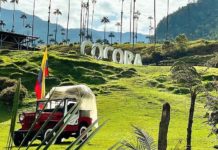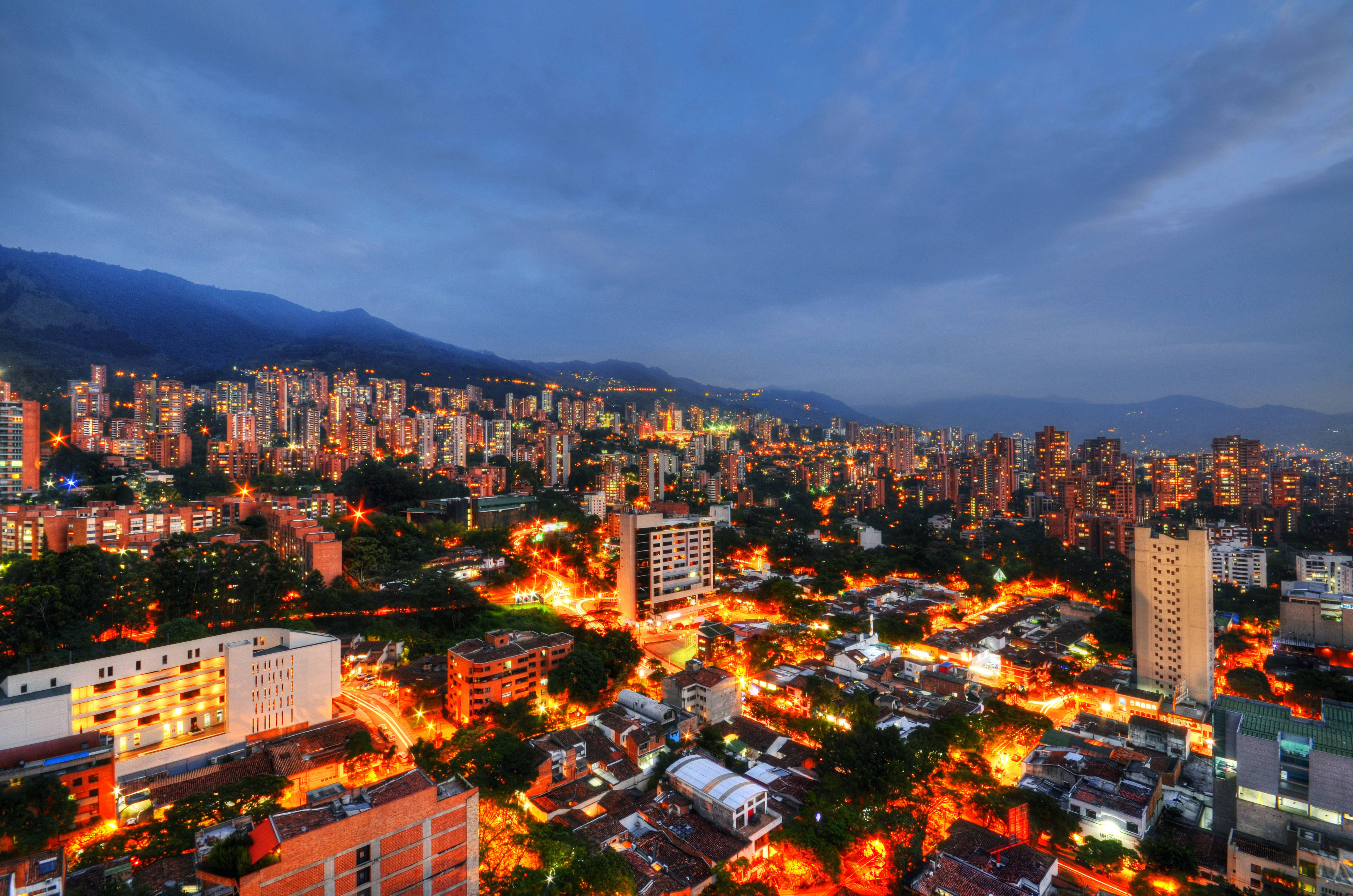
Bogotá boasts its own version of the Bermuda Triangle, an area of the city in which many travelers unfamiliar with the sprawling capital just hope to pass through without getting lost and to arrive at a popular destination on the other side.
At the base of this scalene-shaped sector of the capital are two very popular areas: Centro and La Candelaria.
Centro is known for being a bustling hub of commerce with historical sites such as the Museo del Oro (the Gold Museum, which houses many of the country’s pre-Colombian gold artifacts) and the next-door Cerro de Monserrate (the hill with a beautiful church and farmer’s market atop it, accessed either by taking a trolley or walking up a winding path).
I’ve done the Monserrate three times, twice walking, once making the climb to more than 10,000 feet in less than 40 minutes. A second trip to the Gold Museum can wait until my folks or some other visitors are here.
La Candelaria is the area where most hostels are found, where it’s hard to tell the difference between art and graffiti, and you’ll find a lot of history here as well if you stroll to Plaza de Bolívar, the location of some of the government’s most important buildings, and several popular museums such Museo Botero.
At the top end of the triangle is Chicó, home to the Zona Rosa, the area of the city that everyone goes to see and be seen. Been there, done that too.
On this trip, I promised myself I would spend much more time in two areas I have really wanted to get to know better: Chapinero and La Macarena.
I think I succeeded.
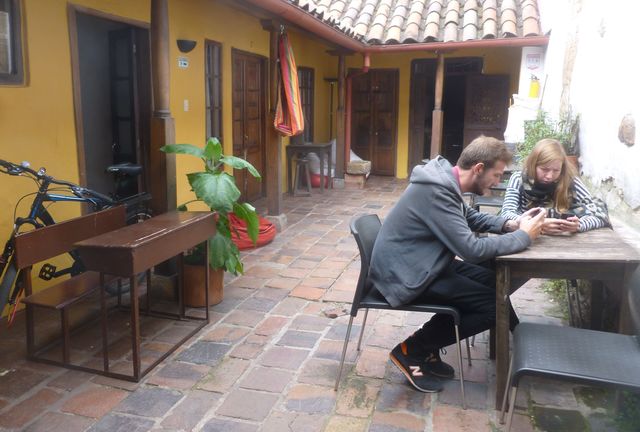
Thursday, Nov. 14, Alegria’s Hostel, La Candelaria
Even though I planned to spend more time in different neighborhoods, I couldn’t travel to the capital without seeing my friend Alegria Meza, who owns my favorite hostel in La Candelaria.
Always comfortable, I love that her hostel is in an old house with colonial architecture. I’m a big fan of architecture.
But I didn’t get too comfortable because I had some exploring to do in the Bermuda Triangle. (Yes, I realize I’m silly.)
I met a friend for dinner at La Gloria, a Peruvian/sushi spot in La Macarena, a once-dangerous neighborhood known for the artisan culture that is making it an up-and-coming place to live.
She got one of the chaufa dishes, basically Peruvian fried rice, while I went for sushi, one of them with tuna, the other with eel. She had never tried sushi before, so I refrained from telling her that one of the rolls I ordered was filled with a sea creature that most people consider disgusting.
My dad did something similar with me when I was 7, telling me the eel on top of his rice was chicken so I gave it a try because almost every kid likes chicken. I was hooked on eel after that.
It worked on my friend too, and now she likes sushi, the result I was hoping for because everyone should enjoy sushi, maybe not enough to write a competing post like Dave and I did, but enough to have it once in a while.
It was late by the time we were done eating so we went our separate ways and planned to meet up the next day. I just had to move first.
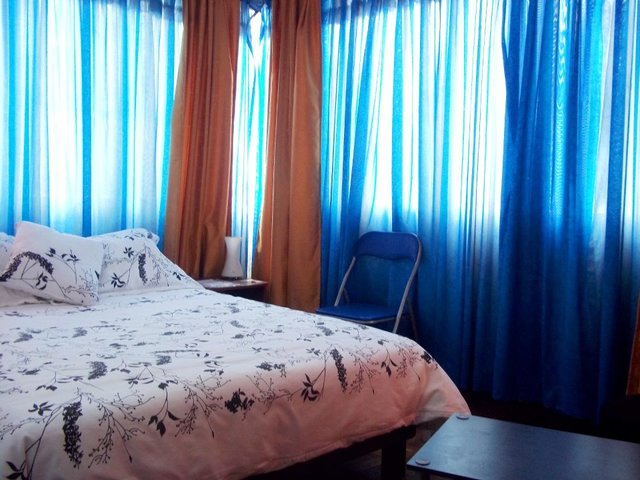
Friday, Nov. 15, Chapinorte Guest House, Chapinero
While Alegria’s Hostel is my favorite in the most popular part of the city for hostels, my favorite hostel overall is Chapinorte Guesthouse, an apartment-themed lodging location that a friendly Spaniard owns.
I had stayed here once before but only for a night, when I was in the big city to get a Visa. I fell in love with the place immediately, as well as the neighborhood, but didn’t really get a chance to get to know it.
As I walked around, I realized that this part of the city is quite the university hub, a district with a handful of them, and I got a lot of exercise exploring almost every corner.
It was good to see Antonio again too. The owner of Chapinorte Guesthouse, he’s in the process of building a beautiful finca in Carmen de Apicala, a pueblo in the Tolima department, less than 2 hours south of Bogota.
I had a good time talking to Antonio, looking around and taking pictures, purposely trying to get lost, just to get a feel for the area.
There seemed to be a good mix of restaurants in the area and if I had not eaten just before or wasn’t about to eat just after going there, I would have tried one. Next time.
I do love this aspect of the community, that parts of one of its main streets, Avenida Caracas, is closed to vehicle traffic on Sundays so people can walk and ride their bikes, something on my second pass through the area. But before I got there, I made another pass through La Macarena.
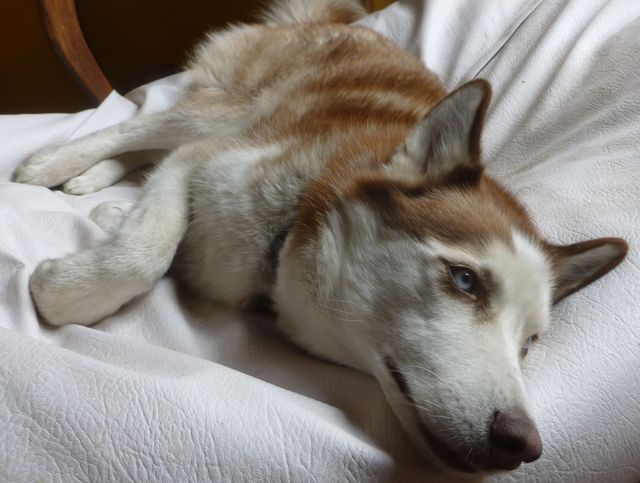
Sunday, Nov. 17, La Macarena
Buried in my computer with occasional interruptions from my new friend Moka, Alegria’s dog, and a break to eat at Patisserie Francaise, the great French restaurant across the street, I didn’t do anything but work on Saturday when I was back at her hostel.
That meant I had to make the most of my Sunday, my last day in the city.
I walked to La Macarena, which isn’t far from La Candelaria, just 20 minutes away or so, and noticed a street fair taking place. Happens every Sunday apparently.
Then I moved on to the heart of the neighborhood, first passing the Planetario de Bogota, then the bullfighting stadium, then back to the streets where I found La Gloria as well as other ethnic restaurants I’d probably enjoy, everything from Brazilian to Italian.
I love the colorful buildings here. They make me smile. Bright colors always do.

A break from walking was needed, so I took the bus to the Chapinero, recharged and ready to get off public transportation and back on the footmobile as I made my way to Gaira Cafe Cumbia House, famous singer Carlos Vives’ restaurant in Chicó.
I took a few pics but mostly I was daydreaming, as I’m wont to do, and enjoying the rare great weather. Everyone in Medellin complains about the cold and rainy weather but I was fortunate, it wasn’t like that when I was there, like so many of my past trips to the capital, so I guess I brought some spring weather with me.
I was pretty hungry after all the walking and I didn’t take long to eat a dish of pork tenderloin, mashed potatoes and tasty barbecue sauce, and live music followed our meal.
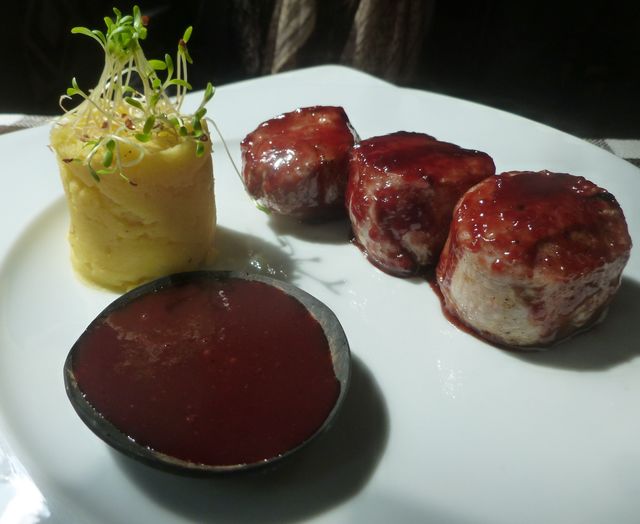
Now comfortable in the capital’s triangle, I started making mental notes for my next neighborhood to explore in this metropolis of 10 million.
I think I’ll go with the Usaquen, a northeast enclave just north of Chicó. I won’t have trouble getting there. I’m getting pretty familiar with this city.



